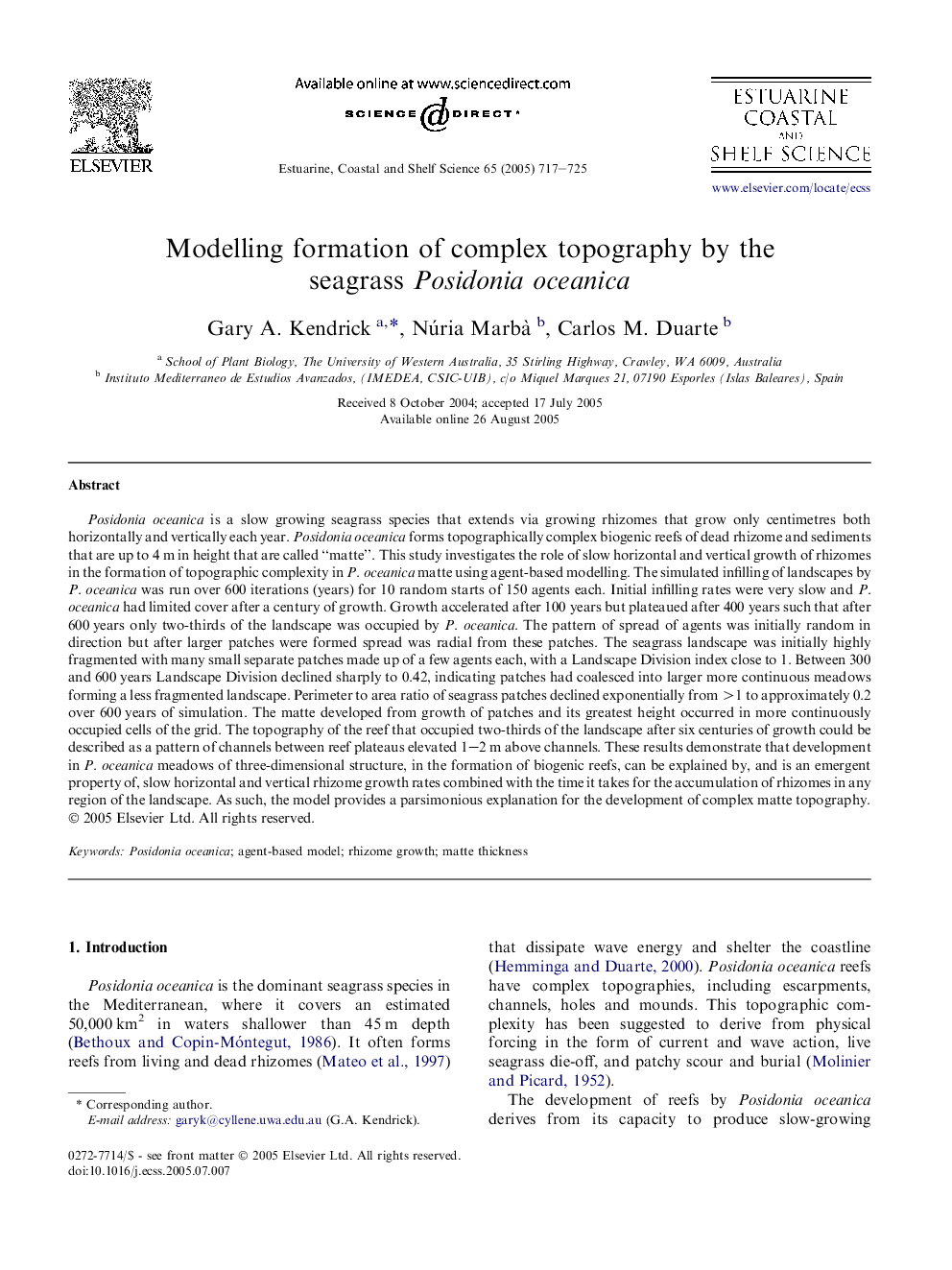| کد مقاله | کد نشریه | سال انتشار | مقاله انگلیسی | نسخه تمام متن |
|---|---|---|---|---|
| 9480641 | 1326766 | 2005 | 9 صفحه PDF | دانلود رایگان |
عنوان انگلیسی مقاله ISI
Modelling formation of complex topography by the seagrass Posidonia oceanica
دانلود مقاله + سفارش ترجمه
دانلود مقاله ISI انگلیسی
رایگان برای ایرانیان
کلمات کلیدی
موضوعات مرتبط
مهندسی و علوم پایه
علوم زمین و سیارات
زمین شناسی
پیش نمایش صفحه اول مقاله

چکیده انگلیسی
Posidonia oceanica is a slow growing seagrass species that extends via growing rhizomes that grow only centimetres both horizontally and vertically each year. Posidonia oceanica forms topographically complex biogenic reefs of dead rhizome and sediments that are up to 4Â m in height that are called “matte”. This study investigates the role of slow horizontal and vertical growth of rhizomes in the formation of topographic complexity in P. oceanica matte using agent-based modelling. The simulated infilling of landscapes by P. oceanica was run over 600 iterations (years) for 10 random starts of 150 agents each. Initial infilling rates were very slow and P. oceanica had limited cover after a century of growth. Growth accelerated after 100Â years but plateaued after 400Â years such that after 600Â years only two-thirds of the landscape was occupied by P. oceanica. The pattern of spread of agents was initially random in direction but after larger patches were formed spread was radial from these patches. The seagrass landscape was initially highly fragmented with many small separate patches made up of a few agents each, with a Landscape Division index close to 1. Between 300 and 600Â years Landscape Division declined sharply to 0.42, indicating patches had coalesced into larger more continuous meadows forming a less fragmented landscape. Perimeter to area ratio of seagrass patches declined exponentially from >1 to approximately 0.2 over 600Â years of simulation. The matte developed from growth of patches and its greatest height occurred in more continuously occupied cells of the grid. The topography of the reef that occupied two-thirds of the landscape after six centuries of growth could be described as a pattern of channels between reef plateaus elevated 1-2Â m above channels. These results demonstrate that development in P. oceanica meadows of three-dimensional structure, in the formation of biogenic reefs, can be explained by, and is an emergent property of, slow horizontal and vertical rhizome growth rates combined with the time it takes for the accumulation of rhizomes in any region of the landscape. As such, the model provides a parsimonious explanation for the development of complex matte topography.
ناشر
Database: Elsevier - ScienceDirect (ساینس دایرکت)
Journal: Estuarine, Coastal and Shelf Science - Volume 65, Issue 4, December 2005, Pages 717-725
Journal: Estuarine, Coastal and Shelf Science - Volume 65, Issue 4, December 2005, Pages 717-725
نویسندگان
Gary A. Kendrick, Núria Marbà , Carlos M. Duarte,